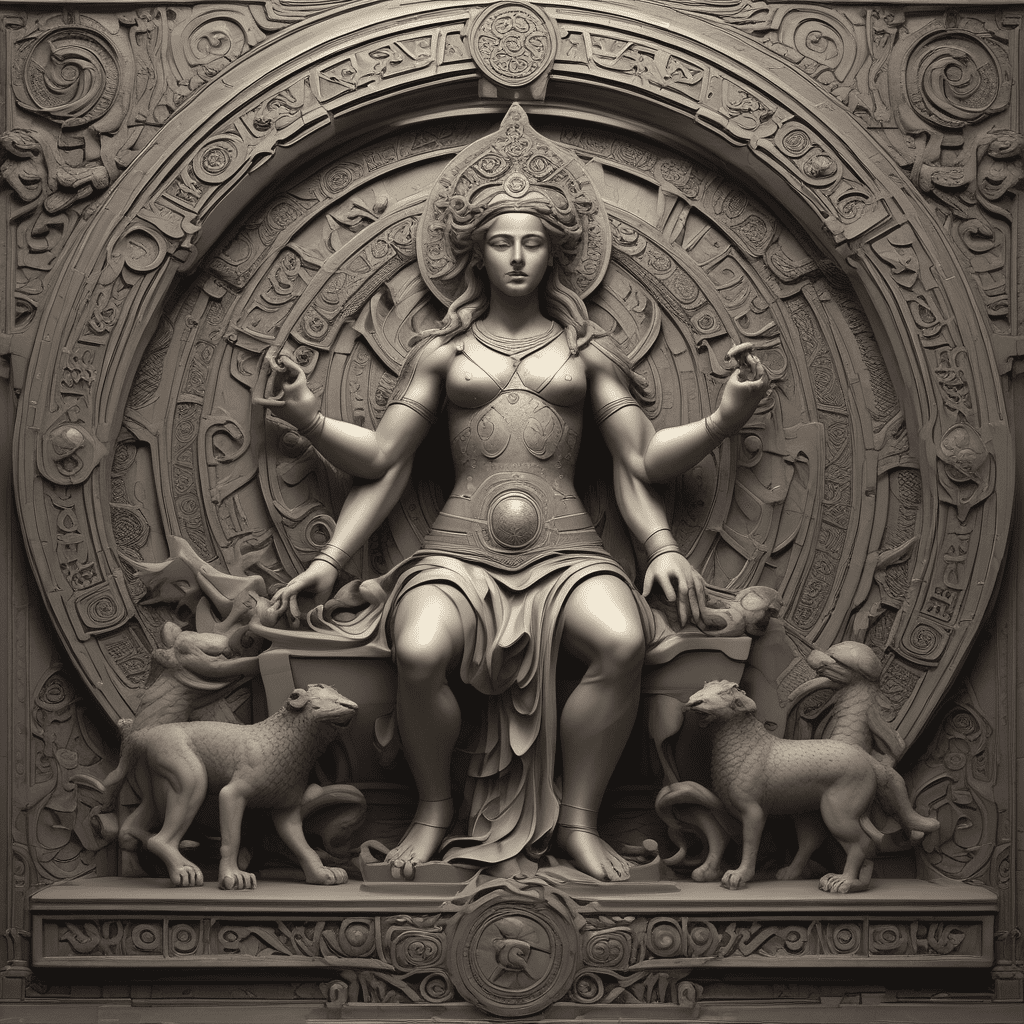The Myth of Lugalbanda: A Hero's Journey in Mesopotamian Mythology
1. Introduction:
Lugalbanda, a heroic figure in Mesopotamian mythology, stands as a prime example of the "hero's journey" narrative. His story, passed down through oral tradition and later inscribed on clay tablets, offers valuable insights into the Mesopotamian understanding of heroism and the archetypal qualities associated with it.
2. The Story of Lugalbanda:
The myth of Lugalbanda recounts the tale of a shepherd who rises to become a king, overcoming numerous challenges along his path. The story unfolds in several episodes, each showcasing Lugalbanda's courage, intelligence, and unwavering determination.
In one episode, Lugalbanda embarks on a perilous journey to the underworld to retrieve magical stones for the goddess Inanna. He faces numerous obstacles, including monstrous guardians and treacherous landscapes, but ultimately succeeds through his resourcefulness and unwavering resolve.
Another episode depicts Lugalbanda's ascension to kingship. Through acts of bravery and leadership, he earns the respect and admiration of his people, ultimately leading them to victory in a crucial battle.
3. Lugalbanda as a Hero:
Lugalbanda embodies the quintessential Mesopotamian hero. He is strong, courageous, and possesses exceptional leadership qualities. He is also fiercely loyal, not only to his family and friends but also to his gods and his people.
Lugalbanda's character is further defined by his intelligence and resourcefulness. He approaches challenges with a practical mind, devising clever strategies and utilizing his wit to overcome obstacles. His unwavering determination and ability to adapt to changing circumstances make him a true hero in the eyes of his people.
4. Symbolism and Motifs:
The myth of Lugalbanda is rich in symbolism and motifs that reflect Mesopotamian beliefs and values. Animals, objects, and locations within the story hold deeper meanings, adding layers of complexity to the narrative.
For instance, the underworld, where Lugalbanda retrieves the magical stones, represents the realm of chaos and death. By venturing into this dangerous domain, Lugalbanda demonstrates his courage and willingness to confront the unknown.
The magical stones themselves symbolize power and knowledge, representing the rewards that come with overcoming adversity. Lugalbanda's successful retrieval of these stones signifies his ability to tap into hidden potential and achieve greatness.
5. Themes:
The Lugalbanda myth explores several central themes, including loyalty, leadership, courage, and overcoming destiny. Through Lugalbanda's journey, the narrative emphasizes the importance of remaining true to one's values and responsibilities, regardless of the challenges faced.
6. Religious and Cultural Significance:
The myth of Lugalbanda is deeply intertwined with Mesopotamian religion and societal values. The gods play an active role in the narrative, guiding and assisting Lugalbanda on his journey. This reflects the Mesopotamian belief in a divine order governing human affairs, where individuals were expected to fulfill their roles according to the will of the gods.
Moreover, Lugalbanda's character embodies the ideals of Mesopotamian kingship. He is portrayed as a just and wise ruler, leading his people with strength and compassion. This reinforces the Mesopotamian concept of kingship as a divinely sanctioned institution tasked with maintaining order and prosperity within society.
7. Legacy of the Myth:
The Lugalbanda myth has endured as a significant work of Mesopotamian literature, inspiring countless artistic creations and influencing later literary traditions. Its portrayal of a heroic journey with universal themes continues to resonate with audiences around the world.
Scholars continue to study the Lugalbanda myth, uncovering new insights into its literary structure, symbolism, and cultural significance. The myth remains a valuable source for understanding Mesopotamian mythology, literature, and societal values.
8. Modern Interpretation:
In modern times, the Lugalbanda myth has gained renewed interest for its exploration of universal human experiences like overcoming challenges, achieving personal growth, and confronting destiny. Lugalbanda's character serves as an archetype of courage and resilience, inspiring contemporary audiences with his unwavering determination.
9. Conclusion:
The Lugalbanda myth provides a fascinating glimpse into Mesopotamian mythology, offering profound insights into the concept of the hero's journey and the archetypal qualities associated with it. Lugalbanda's tale of courage, leadership, and self-discovery has captivated audiences for centuries, leaving a lasting legacy as a testament to the human spirit's ability to overcome adversity and achieve greatness.
10. Related Topics:
- Mesopotamian mythology
- Hero's journey
- Archetypes
- Ancient Near Eastern literature
Frequently Asked Questions (FAQs):
Who is Lugalbanda?
Lugalbanda is a legendary figure in Mesopotamian mythology, revered as a shepherd-king who rose to prominence through his heroic deeds.
What is the significance of the Myth of Lugalbanda?
The Myth of Lugalbanda provides valuable insights into Mesopotamian beliefs about heroism, kingship, and the divine order of the universe. Its enduring themes of courage, leadership, and overcoming adversity make it a timeless tale with universal resonance.
How does the Myth of Lugalbanda contribute to our understanding of Mesopotamian culture?
The myth reflects Mesopotamian societal values, religious beliefs, and literary traditions. By analyzing the story and its symbolism, we gain insights into Mesopotamian perspectives on life, death, and the role of individuals within their society.



